We live in a digital age, meaning the need for businesses to increase their online visibility is greater than ever before. How can you ensure your company gets the most out of its digital presence?
It starts with having a strong content marketing strategy. Get inspired by these 10 key benefits of content strategy that will help your business thrive.
But before that, let’s learn more about what content strategy is. This article will also share key steps on how to create digital content.
What Is a Digital Content Strategy?
Digital content strategy is a modern approach to help companies manage their digital marketing efforts.
Marketing teams have been using various strategies for years, but now it’s time to implement a uniform plan covering all direct and indirect advertising mediums.
A digital content strategy considers the quality of what you’re putting out there and the user experience of how your message will eventually get to the end-user.
It’s all about improving the customer journey. Some people think that a content strategy and an editorial plan are the same when they’re worlds apart in reality.
A content strategy is based on outcomes and key performance indicators that do not always create compelling content for your website or social media channels.
A digital content strategy makes sure that your team is delivering what you promised and can continue to do so in a scalable manner.
It’s not about the latest infographic your marketing department has come up with or how frequently you post on Facebook.
A successful digital content development helps everyone from Sales and Marketing to Customer Service understand what they’re responsible for.
The Importance of Having a Content Strategy
At this point, you’re wondering why it’s crucial to have a digital content strategy for your marketing plan. The answer is simple – brand awareness.
If your company does not have a strategic digital marketing plan, then every department that works with the customer will be giving out different information or possibly even contradicting themselves! You definitely don’t want that.
There are also many scenarios where a digital content strategy is required by law, such as HIPAA, SOX, and GLBA regulations in the United States.
For instance, covered entities must ensure proper safeguards when transferring electronically protected health information (ePHI).
This can be done with a properly written business associate agreement or another contract. On top of that, if you deal with financial information, various compliance regulations need to be considered.
The most noteworthy is probably the Gramm-Leach-Bliley Act (GLBA) which requires financial institutions to protect any nonpublic customer information they obtain. A digital content strategy can help you prevent a costly data breach.
You see, these regulations were created to protect the company as well as their customers/clients from identity theft or financial loss through negligence.
Having a digital content strategy is basically mandatory for every industry.
Digital Content Types
Content comes in all shapes and sizes. Your company’s strategy will depend highly on what types of content you want to share with your target audience.
So let’s take a look at some common digital content types:
SEO Optimized Content
SEO-optimized content is created with keywords, tags, and other metadata that help search engines find it easier.
The content should also be quality which means it should be readable, relevant to your brand’s industry, and interesting to the reader.
Video Content
Video is quickly becoming a standard in any digital marketing campaign. It ranks as one of the top forms of content by unique monthly views as well as unique visitors*.
When done right, videos provide users with a high level of engagement similar to that of blog posts or other types of content.
Whitepapers & E-Books
E-books and whitepapers are written by subject matter experts in your field and can be used as educational material or as a business card to be handed out.
While they’re not always digital, we consider them part of your digital content strategy if they’re often found on your website.
Infographics
Infographics can drive traffic and help generate leads for your business. They also make sharing easier, which means you could see an increase in social shares in the long run.
The best part is creating them does not require a large content budget either.
Email Newsletters
Newsletters can be sent out regularly or when there’s something important to share with your audience. They’re also often used to promote specific products, services, and events.
If you’re looking for increased engagement from your customers and prospects, then email is a must.
Social Media Content
Content created for social media is often short and to the point. It also reflects your brand’s voice on social media channels like Facebook, Twitter, Instagram, and Pinterest.
Much of them are visual content, often containing images or videos.
The following are examples of social media content types:
- Posts, including text Posts, Videos, and Photos
- Links to articles/blog posts or other resources
Benefits of a Content Strategy
A digital content strategy is not just about quality content creation. It’s also about thinking long-term and working towards your business goals. Some of the benefits include:
1. The Right Content for the Right Person at the Right Time
Creating a well-optimized SEO strategy will help you gain search results for specific keywords related to your industry.
For example, if you’re a marketing agency, you could target “marketing agency” and related keywords in your content strategy. There are various keyword research tools available to help you in this regard.
2. Competitive Advantage
If the competition is already doing SEO and social media optimization, then it’s likely that you’ll see an increase in traffic to their websites compared to yours. They’ll also likely get more leads and sales in the long run.
3. Better Rankings in Search Engines
Creating quality content that’s interesting and engaging will help you rank higher in Google and other search engines, resulting in an increase in organic traffic to your website.
Once there, people can opt into your email list, where they’ll receive regular updates on new content, offers, and other important news.
4. Improved Customer Satisfaction
Since your audience will be on the receiving end of regular notifications for new updates, they’ll stay engaged with your brand, increasing sales conversions.
5. More Sharing Opportunities
More sharing opportunities means more people will see your content in their social media feeds. Suppose the content is engaging enough for them to share.
In that case, you’ll have the edge over your competition because potential customers are actively seeking your brand out instead of simply stumbling across your website in search results or on social media.
By having high-quality content that’s optimized for SEO and shared across different digital channels, your audience will likely become engrossed in your brand’s content.
As a result, they’ll keep coming back to see what else you have to share, which can positively affect the rate of return visitors.
6. Improved Reputation
Your reputation is often at stake whenever you publish new content about your company. If it appears as though you’re not dedicated to providing excellent service or solutions, then you’ll lose the trust of your audience.
On the other hand, you can gain their confidence by consistently creating quality content that they genuinely find valuable and engaging.
7. A Solid Foundation for Other Marketing Campaigns
Once you begin building an audience with your email list, you can use it to promote special offers and other campaigns that can help you generate leads and sales for your business.
8. A Content Planner
Having a content strategy in place means that you’ll be able to manage your time better. Using a content calendar, you may allocate specific amounts of time weekly or monthly to create content ideas in an organized manner.
Rather than having a vague plan, you’ll have a particular amount of time writing blog posts, building out infographics, and creating videos.
9. Improved Site Traffic
You can use your content strategy to build links from other websites so that you appear higher on the search engine results pages or rank higher on social media platforms.
You can also use it to find link-building opportunities that can help you attract more people to your site and improve search volume.
10. A Sense of Direction
Having a great content strategy will allow you to decide what type of audience you want to serve as well as the best social media networks for your brand’s needs.
You’ll also be able to prioritize the types of content that you should be creating while de-prioritizing other areas.
How to Develop Content Strategy
Developing a digital strategy entails five basic steps as follows:
Firstly, you’ll need to define your audience. Who are they, and what do they like sharing? What sort of content do they enjoy reading and watching? How can you make it useful for them?
Secondly, work out how often your audience wants to hear from you. Every day, once a week, or once a month? Knowing this will allow you to plan content intelligently.
Next, determine what networks are best for your needs. You may want to focus more attention on blogging, or perhaps social media is more important than both of these things.
Ensure that you’ve prioritized the suitable activities before taking action with your content marketing strategy.
If you’re struggling to determine how often you should be sending out content, you can use an email marketing tool like MailChimp.
You can create autoresponders that send out automated messages on a schedule so that your subscribers don’t need to check back frequently for new updates.
The last step is to keep refining your strategy as time goes on. Content marketing will continue to evolve, so make sure that you’re keeping up with industry trends to stay ahead of your competition.
Digital Marketing Strategy For Your Brand
As you can see, content marketing isn’t anything new. It’s simply an evolution of the different types of communication that you use to advertise your brand to customers and prospects.
By using the right tools, it’s easy to create shareable content that will become a valuable resource for your audience.
From there, it’s simple to attract more people to your website who’ll be interested in your brand.
Once you begin developing a content marketing strategy, there are two key areas that you’ll need to know more about: building relationships and creating shareable content.
We’ve focused on the latter for this post, but don’t hesitate to contact LeadOrigin if you’d like to learn more about the former.
We can also provide you with more tips on how to create a digital strategy that will bring your business to life.












